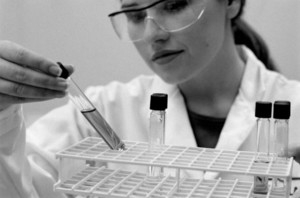China has a burgeoning active pharmaceutical ingredient (API) manufacturing base, albeit one focused largely on achieving quick profits in the domestic sector. According to an analysis by Robert Kennedy, Manager of Industry Research for Thomson Reuters API Intelligence, as published in Scrip News of 9 December 2009, a striking number of Chinese companies are gearing up to supply pharmaceutical ingredients to the regulated markets of the west.
As he points out, China has integrated itself into the global supply chain for both innovator pharmaceutical and generics companies and is no longer merely a low-cost threat. For many years, it has been an important supplier of intermediates and older off-patent molecules. Increasingly, it is moving towards supplying newer molecules and is slowly becoming involved in the development of non-infringing processes in support of patent challenges.
Doing business in China is no longer just about the low cost – the country is investing heavily in its people and facilities, and can be a source of high-quality ingredients in its own right. Nevertheless, cost remains a significant part of the equation when companies decide where to build their factories or from whom to buy their active ingredients.
According to figures developed by Thomson Reuters API Intelligence team, the number of Chinese manufacturers capable of supplying APIs to regulated markets has steadily increased over the past five years. The team assesses the capabilities and experience of API manufacturers according to a proprietary scheme based on objective regulatory data ranging from ‘established’ (those that are well versed in supplying highly regulated markets) to ‘local’ (those capable of supplying only their domestic or less regulated markets).
Since 2004, the number of ‘established’ manufacturers, defined as having years of experience supplying active ingredients to regulated markets, has increased from eight to 11. Examples include Zhejiang Hisun and Zhejiang Huahai.
Over the same period, the number of ‘less established’ groups, a category including Jiangsu Hansen and Zhejiang Medicine Company, which have less of a track record in supplying regulated markets in terms of the length of their history or number of products supplied, has increased from 11 to 30.
Lastly, the number of groups designated as ‘potential future’ due to their interest in supplying to regulated markets despite limited or no known performance, has jumped from 44 to 153.
Although more than 80% of the manufacturers in China today are still locally focused, i.e., neither interested nor capable of supplying to regulated markets, the number of less established and potential future companies has more than doubled and tripled, respectively, since 2004. According to the author, this trend indicates that Chinese API manufacturers are investing large sums of money in facility upgrades with an increased focus on meeting international GMP guidelines and regulations. (see also China API sourcing: the way forward, China is not the low-cost option in every category, Sourcing APIs from China, Establishing an API manufacturing base in China and China's appeal of the Chinese API sourcing market)
Reference:
Robert Kennedy. Can China retain its API sourcing appeal? Scrip News. 2009 December 9/ 2010 Scrip 100.








 0
0











Post your comment